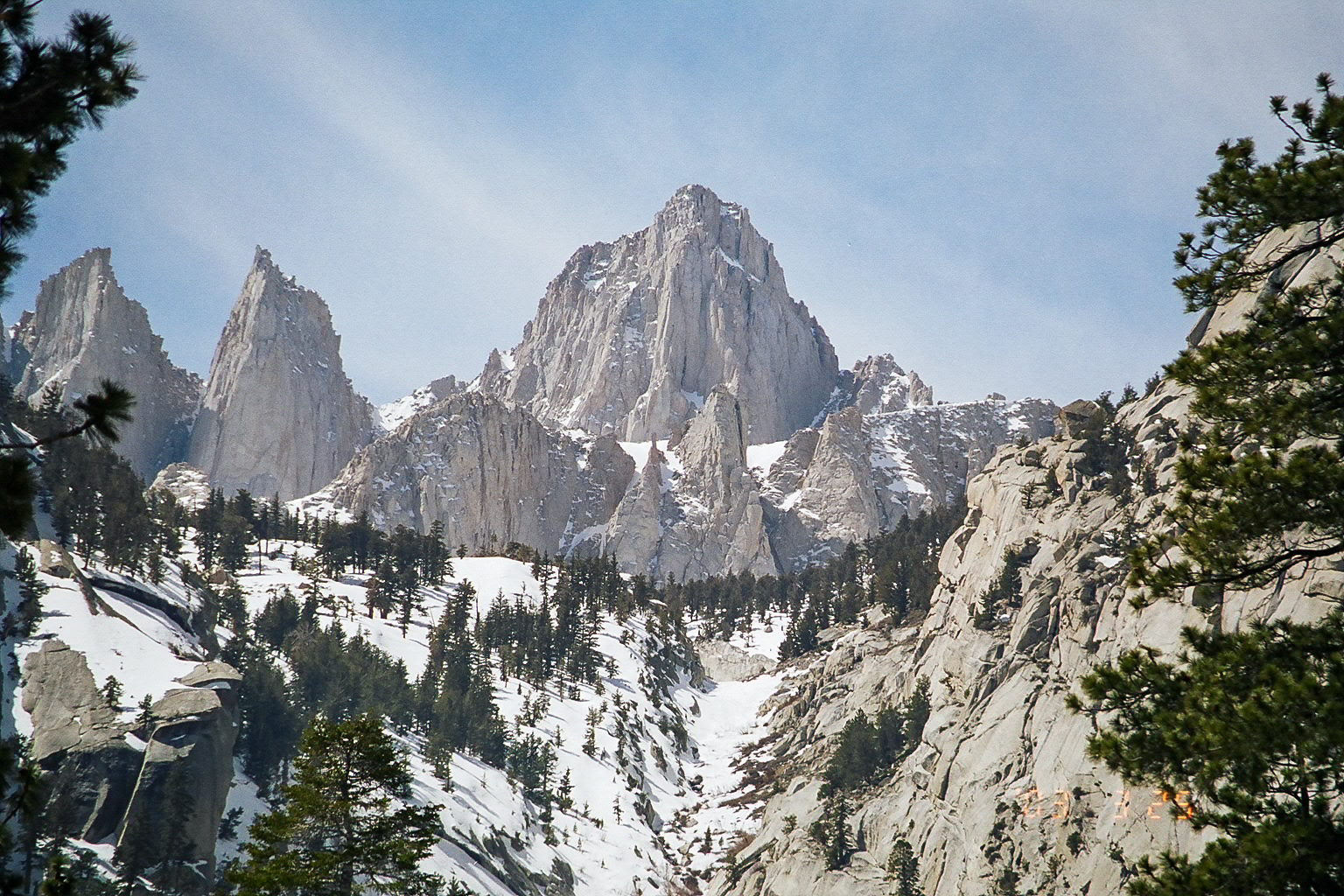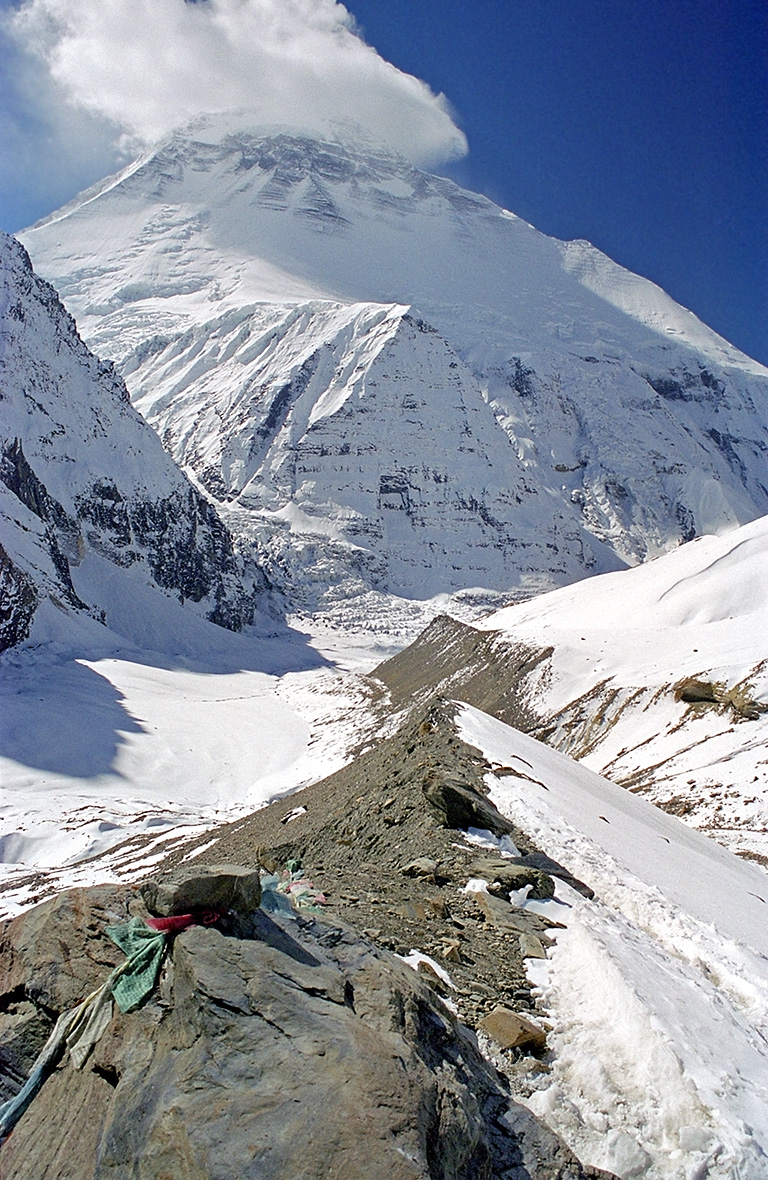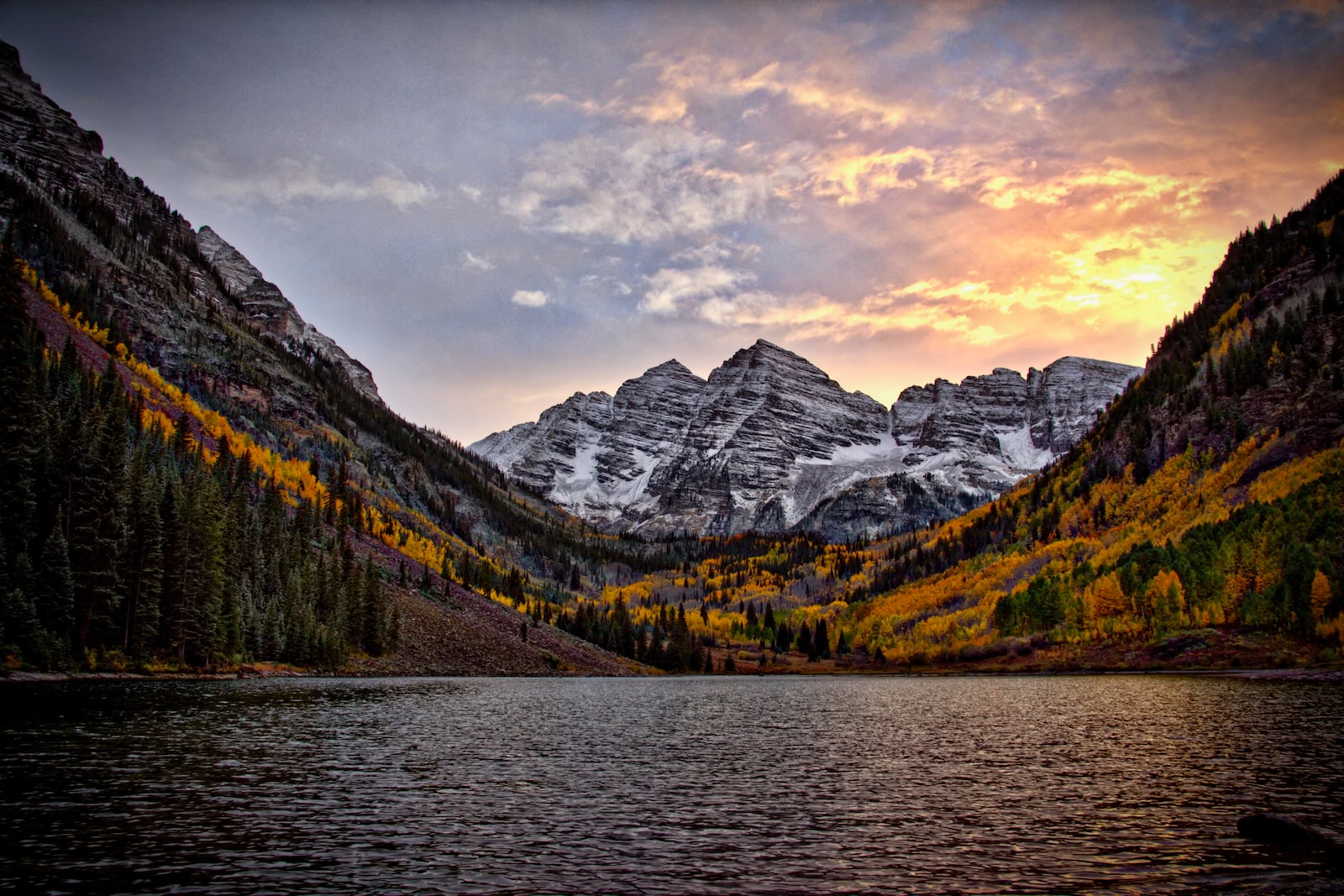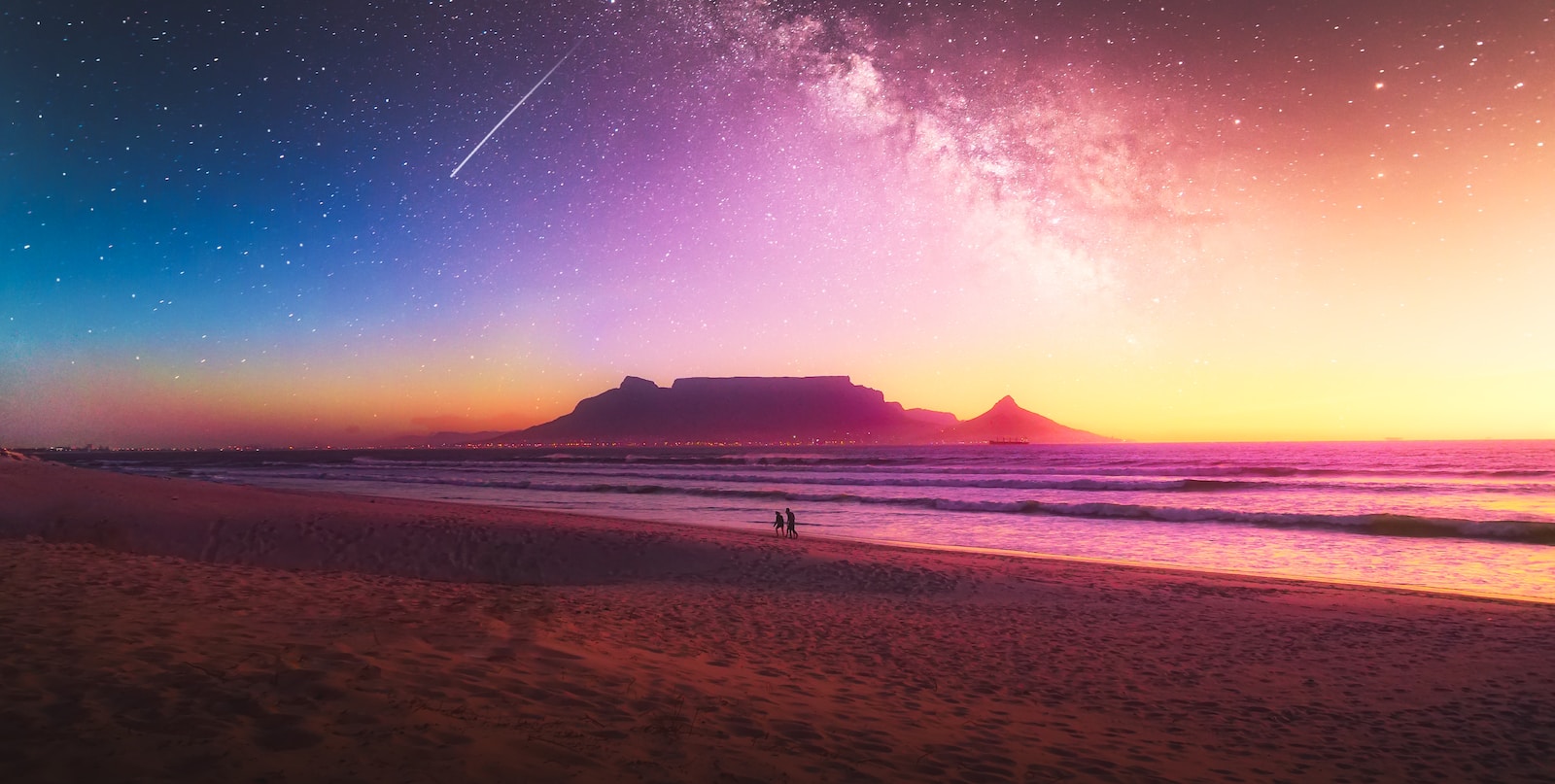Capture the high contrast beauty of Mount Whitney, the highest peak in the Sierra Nevada range, USA. Join me as we explore the breathtaking landscapes, golden sunrises, and vibrant sunsets that grace this majestic peak. Discover how to effectively portray the unique geologic features of Mount Whitney through striking compositions, and immerse yourself in the awe-inspiring natural beauty that surrounds this iconic location.
Table of Contents
- The High Contrast Beauty of Mount Whitney
- Capturing the Marvelous Hues of Mount Whitney
- The High Contrast Beauty of Mount Whitney
- Frequently Asked Questions
- 1. Where is Mount Whitney located?
- 2. Why is Mount Whitney popular among landscape photographers?
- 3. What are some unique geologic features of Mount Whitney?
- 4. How can I capture the marvelous hues of Mount Whitney in my photographs?
- 5. Are there any photography restrictions in the Mount Whitney area?
- 6. Are there any photography workshops or tours available for Mount Whitney?
- 7. Can you recommend any photo spots near Mount Whitney?
- 8. How can I prepare for a photography trip to Mount Whitney?
- 9. Can I capture starry skies near Mount Whitney?
- 10. Are there any safety precautions I should take while photographing Mount Whitney?
- Wrap Up
The High Contrast Beauty of Mount Whitney
Mount Whitney, located in the majestic Sierra Nevada range in the United States, offers photographers a myriad of opportunities to capture its high contrast beauty. From its towering peaks to its serene lakes and magnificent sunrises and sunsets, Mount Whitney is a landscape photographer’s dream.
Unique Geologic Features
One of the reasons why Mount Whitney stands out as a subject for landscape photography is its unique geologic features. The Sierra Nevada range was formed by the collision of tectonic plates, creating dramatic rock formations and deep valleys. These features provide a stunning backdrop for photographs and can add depth and texture to your compositions.
Additionally, Mount Whitney is renowned for its granite walls, which reflect light in striking ways. As the sunlight changes throughout the day, the granite can transform from a soft, golden hue to a vibrant pink or orange. By photographing these granite walls at different times, you can capture the ever-changing colors and create visually stunning images.
Striking Compositions
To truly portray the beauty of Mount Whitney, it’s important to focus on creating striking compositions. The key to capturing the essence of this landscape is to find unique angles and perspectives.
One technique to consider is incorporating leading lines into your photographs. The Sierra Nevada range is home to numerous trails and paths that can guide the viewer’s eye through the frame. Utilize these lines to create a sense of depth and draw attention to Mount Whitney’s grandeur.
Another technique to enhance your compositions is to experiment with framing. Use natural elements such as trees, rocks, or even a nearby lake to frame Mount Whitney in a captivating way. This not only adds visual interest but also helps to create a sense of scale and context.
When photographing Mount Whitney, it’s essential to pay attention to the lighting conditions. Sunrise and sunset are particularly magical times to capture the range. The soft, warm light during these golden hours adds a touch of enchantment to your images. Experiment with silhouettes, backlighting, and long exposures to truly convey the ethereal beauty of Mount Whitney at these times.
Lastly, be sure to explore different vantage points. Mount Whitney can be best appreciated from various locations such as Lone Pine Lake, Mirror Lake, or the Alabama Hills. Each vantage point offers its own unique perspectives and creates diverse photographic opportunities.
In conclusion, Mount Whitney’s high contrast beauty makes it a captivating subject for landscape photography. Its unique geologic features and the ability to create striking compositions allow photographers to capture the true essence of this magnificent range.
Did you know that Mount Whitney is the tallest mountain in the contiguous United States, standing at an impressive height of 14,505 feet (4,421 meters) above sea level?
Capturing the Marvelous Hues of Mount Whitney
As a landscape photographer, capturing the beauty of Mount Whitney in the Sierra Nevada range in the USA is a dream come true. With its breathtaking landscapes, stunning sunrise and sunset views, and unique geologic features, Mount Whitney offers endless opportunities for capturing striking compositions. To ensure you make the most of your photography expedition, it is important to have the right equipment. Here are some essential camera gear and lenses to consider:
1. Cameras:
When it comes to cameras, the options are vast. Regardless of the brand you choose, consider the following aspects:
- Resolution: A high-resolution camera ensures maximum detail and sharpness in your images. A minimum of 24 megapixels is recommended.
- Noise Performance: Look for a camera with good noise performance, especially in low-light conditions, to maintain image quality.
- Dynamic Range: Having a camera with a wide dynamic range helps capture the wide range of contrasts found in Mount Whitney’s landscapes.
2. Lenses:
Choosing the right lenses is crucial for capturing Mount Whitney’s beauty in all its glory. Here are some options:
- Wide-angle lenses: Ideal for capturing sweeping vistas and the grandeur of the Sierra Nevada range. They provide a broader field of view, allowing you to include more of the landscape in your composition.
- Telephoto lenses: Useful for capturing distant details and compressing the perspective to create visually stunning images. They also allow you to focus on intricate features such as rock formations.
- Prime lenses: These fixed focal length lenses offer exceptional image quality and low-light performance. Consider a wide-angle prime lens for capturing expansive landscapes and a telephoto prime lens for isolating specific elements.
Ultimately, the best camera and lenses for your Mount Whitney photography adventure depend on your personal preferences and shooting style. Some photographers may prefer the versatility of zoom lenses or the convenience of lighter mirrorless cameras. Experimenting with different gear will help you discover what works best for you and your creative vision. Remember, it’s not just about the equipment; it’s about how you use it to tell a compelling story.
The High Contrast Beauty of Mount Whitney
Mount Whitney, nestled in the majestic Sierra Nevada range of California, offers breathtaking vistas that are a dream for any landscape photographer. With its towering peaks, rugged slopes, and stunning sunrise and sunset views, this iconic mountain provides endless opportunities to capture its high contrast beauty. In this guide, we will explore the unique geologic features of Mount Whitney and discover the best vantage points and positions to capture its marvellous hues through striking compositions.
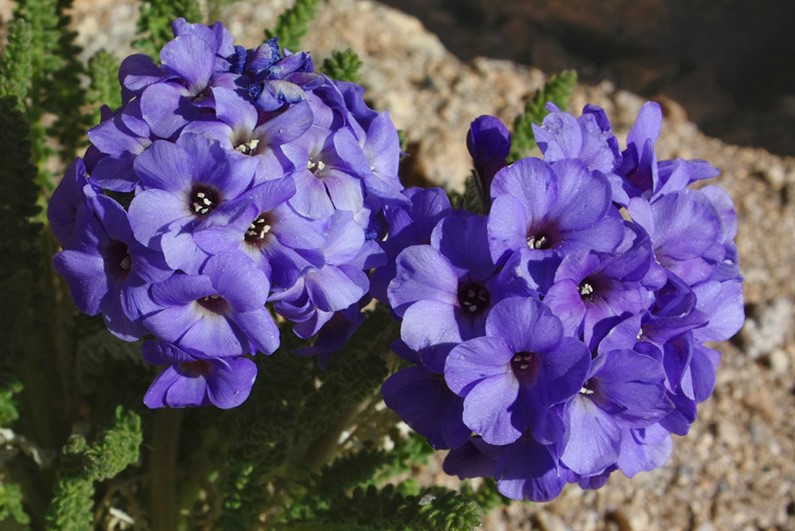
The Best Time of Year to Photograph Mount Whitney
While Mount Whitney offers captivating scenes year-round, certain times of the year enhance its beauty with vibrant colors and atmospheric conditions that photographers crave. The ideal seasons to capture the mountain’s allure are spring and fall.
In spring, after the winter snow has started to melt, the slopes come alive with blooming wildflowers. The meadows surrounding Mount Whitney burst with vibrant purples, yellows, and pinks, creating a stunning contrast against the snowy peaks. The crispness of the air and the mild temperatures make it a delightful time to explore the area and capture its natural wonders.
During fall, the foliage on the lower slopes of Mount Whitney transforms into a mesmerizing display of golden hues. The surrounding forests become a patchwork of orange, red, and yellow, offering a captivating backdrop that complements the mountain’s rugged features. The changing colors combined with the warm and soft light of autumn provide a magical atmosphere, ideal for photographing this natural masterpiece.
Best Vantage Points and Positions for Photographing Mount Whitney
To truly showcase the grandeur and high contrast beauty of Mount Whitney, selecting the right vantage point and position is crucial. Here are three options to consider, each offering unique perspectives:
- Whitney Portal Observation Point: Located near the trailhead of the famous Mount Whitney Trail, this observation point provides a stunning panoramic view of the mountain. From this vantage point, you can capture the entire range, including the snow-capped peaks, the rugged slopes, and the surrounding landscapes. The sunrise and sunset views from here are nothing short of spectacular, as the changing light dances across the mountain’s features, creating dramatic shadows and highlights.
- Lone Pine Lake: If you’re looking for a composition that includes a serene body of water as a foreground element, Lone Pine Lake is an excellent choice. It’s a moderate hike from Whitney Portal, and once you reach the lake, you’ll be rewarded with magnificent reflections of Mount Whitney in the calm waters. This location is ideal for capturing stunning sunrise shots with the mountain mirrored on the lake’s surface.
- Cottonwood Lakes Basin: If you’re up for a more adventurous and secluded experience, exploring the Cottonwood Lakes Basin will lead you to hidden gems. Hiking to lakes such as South Fork and Long Lake will provide you with incredible close-up views of Mount Whitney. The crystal-clear waters of the lakes combined with the rugged cliffs and peaks make for captivating compositions. This area is especially magical during sunrise and sunset, when the warm light illuminates the mountain, creating a striking contrast against the surrounding landscape.
Remember, Mount Whitney’s beauty is ever-changing, so don’t be afraid to explore different angles and compositions to capture its uniqueness. Immerse yourself in the landscape and let your creativity guide you as you photograph the high contrast beauty of this magnificent mountain in the Sierra Nevada range.
When photographing Mount Whitney during sunrise or sunset, use a tripod to ensure sharp images. With lower light conditions, longer exposure times may be necessary, and a tripod will prevent any camera shake. Additionally, try using a graduated neutral density filter to balance the brightness of the sky with the landscape, creating a more evenly exposed image.
Frequently Asked Questions
1. Where is Mount Whitney located?
Mount Whitney is located in the Sierra Nevada range in the United States, specifically in the state of California.
2. Why is Mount Whitney popular among landscape photographers?
Mount Whitney’s breathtaking beauty, dramatic landscape, and stunning sunrise and sunset views make it a favorite destination for landscape photographers.
3. What are some unique geologic features of Mount Whitney?
Mount Whitney is known for its granite peaks, deep valleys, glacial lakes, and the famous “Needle,” a striking rock formation that adds character to the landscape.
4. How can I capture the marvelous hues of Mount Whitney in my photographs?
To capture the beautiful colors of Mount Whitney, it’s important to plan your photography session around sunrise or sunset when the light is softer and creates a warm, golden glow. Experiment with different angles and compositions to showcase the high contrast beauty of the mountain.
5. Are there any photography restrictions in the Mount Whitney area?
As of now, there are no specific photography restrictions in the Mount Whitney area. However, be sure to follow Leave No Trace principles and respect any additional regulations in the specific areas you visit.
6. Are there any photography workshops or tours available for Mount Whitney?
Yes, several photography workshops and tours are available for Mount Whitney and the surrounding Sierra Nevada range. These workshops offer guidance on composition techniques, lighting, and post-processing to help you capture the best possible images of this stunning landscape.
7. Can you recommend any photo spots near Mount Whitney?
Some popular photography spots near Mount Whitney include the Alabama Hills, Lone Pine Lake, and the Whitney Portal. These locations offer diverse landscapes and unique perspectives for capturing Mount Whitney’s beauty.
8. How can I prepare for a photography trip to Mount Whitney?
Prior to your photography trip, make sure to check weather conditions, carry essential photography gear such as a sturdy tripod and filters, pack appropriate clothing and footwear for the hiking trails, and bring plenty of water and snacks. It’s also a good idea to research the area beforehand to familiarize yourself with potential photography opportunities.
9. Can I capture starry skies near Mount Whitney?
Absolutely! Mount Whitney and the surrounding Sierra Nevada range are known for their dark skies, making it an excellent spot for astrophotography. Be sure to check moon phases and plan your visit during a new moon for optimal stargazing and capturing the Milky Way.
10. Are there any safety precautions I should take while photographing Mount Whitney?
While photographing Mount Whitney, it’s important to prioritize safety. Stay on designated trails, be aware of potential wildlife encounters, and follow any guidelines or warnings provided by the authorities. Additionally, don’t forget to bring extra batteries, memory cards, and a first-aid kit for any unforeseen circumstances.
Wrap Up
As we conclude this exploration of the high contrast beauty of Mount Whitney, we hope you’re inspired to venture into the Sierra Nevada and capture its breathtaking landscapes through the lens of your camera. Remember to plan your visit during sunrise or sunset for the most dramatic lighting, and make sure to experiment with different compositions to showcase the unique geologic features of this majestic range.
Share your own experiences and photographs of Mount Whitney in the comments below. We’d love to hear about your favorite spots, as well as any tips or techniques you’ve discovered for capturing the marvellous hues of this iconic peak. Join the discussion and let’s celebrate the beauty of Mount Whitney together!
